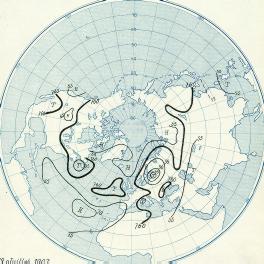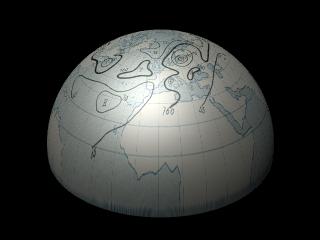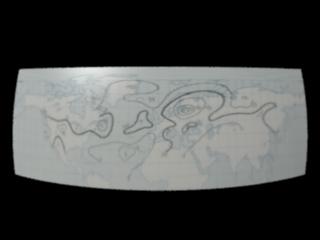Now you want to take this image and map it onto a hemisphere, so that the result looks like a half globe. You can almost do this in POV, but since the original map is not orthographic, you get ugly distortions: the polar region is to small, and the equatorial region is too big (first image). The second image has been rendered with BMRT, which supports the renderman shading language. It can evaluate the texturemap at any coordinate, so you can correctly map every type of projection.
POV was twice as fast on this image, time x-povray +ikugel.pov +a said 0:32.48elapsed, as compared to BMRT's time rendrib kugel.rib with 1:09.52elapsed. But BMRT got the results right. The difference is even more striking if you want to map the image onto another shape like a segment of a sphere (or, without any change in the shader, to any patch you can think of):
All three pictures use the same simple surface shader, FHKalotte. (The .tiff version of the map is not included because of its size.)




